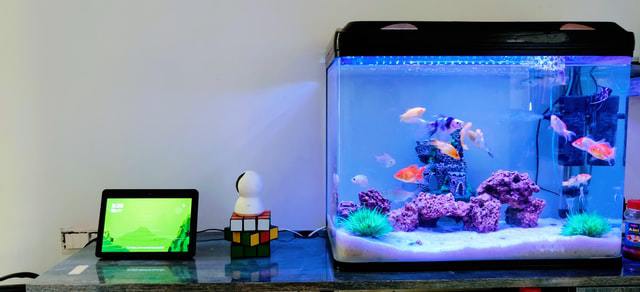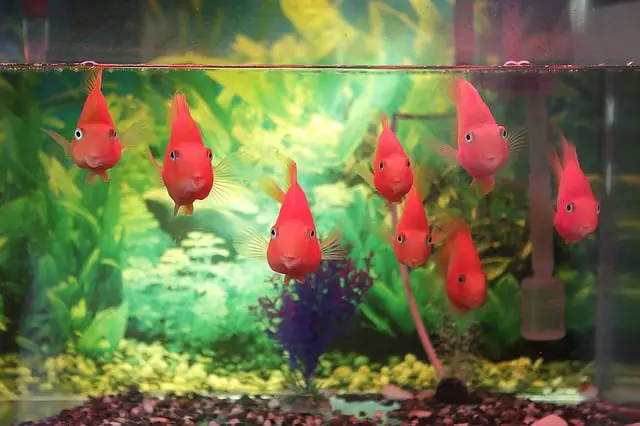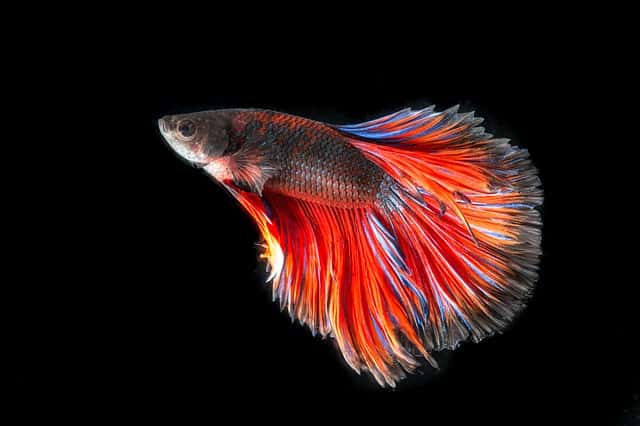It is one thing to learn how to introduce new fish to a tank, it is another to replace the location where most of the tank’s beneficial bacteria resides. If you are considering or need to switch out your aquarium filter on an established tank, it is good to understand what can go wrong and how to make sure that does not happen.
A new aquarium filter should only be replaced when there is beneficial bacteria in the tank’s substrate. Hooking up a new aquarium filter cannot be avoided sometimes. Ensure there is enough beneficial bacteria in the tank elsewhere before doing this. You risk having your tank revert back to the beginning of the nitrogen cycle which can be fatal for any inhabitants of the tank.
Of course, there are times when a filter just stops working and you can replace it with the exact same model. This is the best scenario because you can take the filter medium from the broken filter and put it in the new one then turn it on and there should be no issues at all. In this article, I will go over what you can do if you have to throw out the filter medium as well as any other information I can share to help you succeed with this process.
Let’s get to it.
Can You Put a New Filter in Your Fish Tank? (Why You Might Want to?
Let me be clear here. This article is about those times when you have to change out the actual filter itself, not just the sponge and charcoal in the filter. Sometimes you run into a situation where you might need a brand-new filter.
You can definitely replace a filter in your fish tank. I just did this exact thing in my 10-gallon aquarium last summer. I turned it off to do my weekly water change and when I plugged it back in after I was done, the filter motor would not turn back on.
I tried to get the little fan in the HOB filter to spin by poking it and trying to give it a boost with a pen, but it just would not go. It was an old filter and I guess it was just done working for me.
So, I went down to my local fish store and was able to pick up the exact same model of AquaClear HOB filter and have it running in just a couple hours.
You can still do this though even if you are not replacing it with the same filter.
As with all pieces of equipment, they do not last forever. Sometimes they get bunged up to a point where they just fail. Or the motors in them get old and give up.
Another reason you might be replacing the filter is you want to upgrade to a different type or size of filter.
If you decide you want more surface area for beneficial bacteria to grow, then putting in a much larger filter is a good idea. You could also want more flow in the tank without using a power head.
For whichever reason you chose (or maybe it was forced on you) to replace the filter, they are all good ideas.
How Do I Change the Filter in My Aquarium Without Losing Beneficial Bacteria?
The main concern with changing the whole filter in your fish tank is that you can lose a lot of beneficial bacteria in the process. The beneficial bacteria is what keeps your tank’s water parameters at the levels they should be among other processes.
If you have substrate, there will be bacteria living there as well. There is also bacteria on plants and decorations as well as the inside glass or acrylic surface of the tank. Therefore, changing the filter is a good idea in this situation. But what to do?
- If you are replacing your filter with the same model, then you should have no problem. Just take the filter medium out of the old filter and insert in the new one. Add tank water and turn the filter on. It is that simple!
- If you are replacing it with a different one, you can still take the sponge from the old filter and insert it into the new one. If it is too small, you still most likely fit the new sponge in as well. If so, then great – the new sponge will populate with bacteria much faster this way. After a couple weeks, take out the older sponge and throw it away.
- If the sponge is too large for the new filter, just take some scissors and cut it down to fit. Pretty simple right? After a month or more, you can change it out with a sponge that is manufactured to fit that filter, if you want.
- If I were in this situation, I would put the new sponge in the filter on top of the older sponge about one to two weeks before I got rid of the older one. This way the beneficial bacteria has the chance to grow in the new sponge. This makes the exchange seamless with no issues.
- If you happen to know someone with a healthy tank, it wouldn’t hurt to ask them if you could have a piece of their sponge from their filter or if you could have them put a new sponge in their filter for a couple weeks before you get a new filter. Make sense?
- If you are using charcoal, I would remove it completely unless you are needing it for something specific like a smelly tank or if you were trying to clean medication out of the water.
That is about it for changing out your aquarium filter for a new one. There really isn’t anything else to it regardless of what type of filter you use, be it a HOB, Canister or Internal filter.

How Long Does It Take for Good Bacteria to Grow in a Fish Tank?
Since bacteria is such an important factor when it comes to having a healthy fish tank, a good thing to know is how long it takes for bacteria to grow. In this case, it would be in your filter medium.
It takes approximately 4 weeks for bacteria to grow throughout an aquarium. This timeframe is dependent on the waste accumulating in the tank. The waste will come from excess fish food and actual fish waste (poop).
Bacteria forming in this type of environment is a natural process. When the water parameters are out of whack with rising ammonia, excess food and fish poop, bacteria starts to form to break down these toxins. You might also know this natural process as the nitrogen cycle or cycling when it comes to aquariums.
It is an ongoing battle between good and bad in your fish tank, but at the beginning of either existence there is always the bad being ammonia nitrite and nitrate and then, of course, the added food and fish waste afterwards.
A typical nitrogen cycle with a brand-new tank can take anywhere from 4 to 8 weeks but your tank will already have some bacteria and a living environment already living present. I would say it should only take about 4 weeks (if that long) to have your filter filled with bacteria.
How Can You Increase the Beneficial Bacteria in a Fish Tank?
One thing I have done in the past when cycling a new tank is add a biological enhancer to the water. It comes in a liquid form and is supposed to contain beneficial bacteria.
The bacteria in the bottle does not replace the beneficial bacteria that grows in a fish tank. It does, however, help to put the water parameters in check making it safe for fish all while it is still technically cycling.
Sometimes I use a biological enhancer if I notice my tank’s water parameters going out of whack to neutralize everything until the tank’s beneficial bacteria can do its thing. It usually helps to save the fish from dying unnecessarily.
The only real way to increase beneficial bacteria in a tank is to feed less so the fish poop less then you do not have to do as many water changes. This is dangerous though for the water parameters and the health of the fish. It is a fine line you do not want to cross.
You could add more substrate or a larger than required filter or a 2nd filter to increase bacteria levels. Adding bio balls to your filter medium is another great way to increase the bacteria levels as they add more surface area for bacteria to grow.
Conclusion
In conclusion, I just want to point out that this process is very straight forward. Think about what you are doing and take your time making the right choice for your tank. Your fish are counting on you to keep them healthy.
Sometimes things happen and a filter needs to be replaced. It so, just remember not to throw out the old sponge if you do not have too. As well, make sure to fill the new filter with tank water and not from the tap. That way, you do not kill any of the beneficial bacteria.
I hope this article has been helpful to you. Thanks for reading and good luck with your aquarium filter changeout!
Related Posts
Do I Need Charcoal in My Aquarium Filter?
Are Sponge Filters Good Enough?
Can I use a Sump Tank for Tropical Fish?
What is the Purpose of a Wave Maker in an Aquarium?
Are Fish Tank Filters Noisy? (How to Fix)




